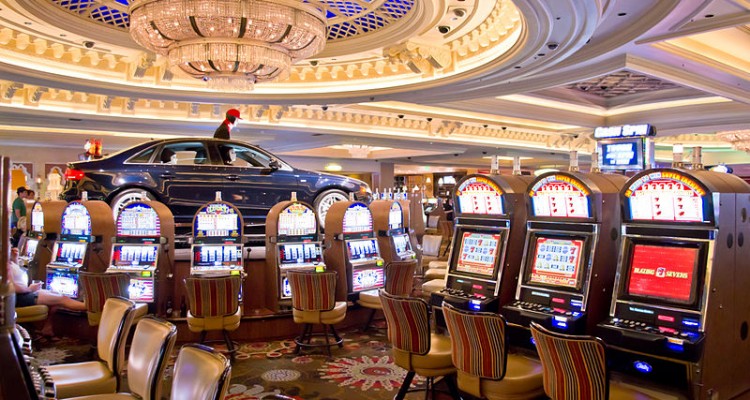Dear Mark: In your column “I’ve Been Everywhere,” you wrote about all the casino destinations that you have visited over the years. Did you find in your travels that slot machines look and play the same from state to state? Ken K.
Slot machines, Ken, are comparable from casino to casino, state to state. For instance, if it is an IGT Dazzling Dollars 3-Reel 1-Line 3-Credit machine in Wilkes-Barre, PA, expect the same in Reno, NV.
So, yes, Ken, they all look and physically play the same: you press the credit button, hit spin, press credit, hit spin, keep repeating, and then reach for your wallet for more money.
But, just because any old slot machine looks, walks and quacks like a duck, that doesn’t mean it is part of the Anatidae family of birds, especially when it comes to return percentages to the player. “Play” and “pay,” Ken, are twins of two different fathers.
Payouts on slot machines are set by casino operators and are not consistent between gaming jurisdictions.
The best cluck-for-the-buck when it comes to playing slots is in Nevada, where the house last year kept 6.4 percent. The worst would be in Iowa, where casinos in that state keep 9.4 percent of every dollar played. Furthermore, Ken, slot machines these days keeping a tighter grip on the money gamblers feed into them, and this translates into your hard-earned money not lasting as long as it used to.
For example, based on the blended slot hold from a decade ago, if your bankroll were $100, you could gamble for 3.2 hours at $0.75 per spin. With higher holds across the board, now you will last approximately 2.6 hours, a 22% decrease. With these tighter slots, your time on device decreases, hence, you lose you money faster. But, Ken, few players play $0.75 per spin anymore. It’s more like $2 a pop, so your slot machine play with that same $100 is now reduced to just one hour.
Casinos are also starting to feel the effects of higher hold percentages. Not only are casinos making it tougher for players to win at the slot machines; the rising hold percentage has not translated into incrementally increasing gaming revenue for casino operators post-recession. In fact, many believe higher hold percentage is the contributing factor to slot revenue decline. I agree, but I would vigorously contend that it is equally the lack of Gen Xer and Millennial players.
Here are just a few examples of current hold percentages showing where slots got stingier from a decade ago.
Louisiana 9.26%, was 8.65%
Mississippi 7.49%, was 6.54%
Missouri 9.33%, was 7.44%
Nevada 6.4%, was 5.72%
Iowa 9.4%, was 7.05%
New Jersey 8.96%, was 8.19%.
Conversely, Pennsylvania’s hold percentages decreased from 9.56% to 7.82% and their slot revenue increased by 11.8%. Wondering aloud here, but is management upstairs taking notes?
This is not to say that all slots pick your pocket. Some casinos do offer “liberal” slot machines. By liberal I mean casinos that advertise a higher payback percentage on “selected machines.” It’s up to you to find a casino advertising those liberal paybacks; then you’ll need to ask someone in slot personnel which machines those are.
Gambling Wisdom of the Week: “I’m a gambler. I’ll always be one. I couldn’t be anything else. So, my life will always be full of wins and losses. I wouldn’t have it any other way. It’s exciting. There’s never been a dull moment in my life.” – Doyle Brunson, How I Made $1,000,000 Playing Poker (1979)


